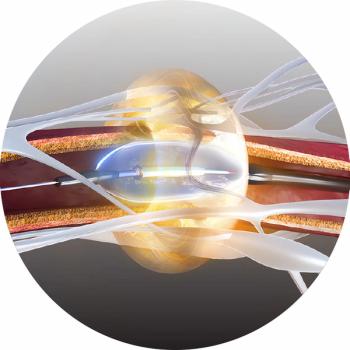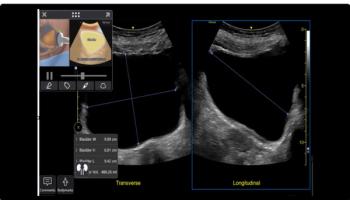
SonoSite exec discloses strategy underlying M-Turbo
Point-of-care medicine took a step forward Oct. 1 with the release of SonoSite’s latest hand-carried ultrasound system. M-Turbo, so named because of its speed, offers improved image clarity and ease of use. This is achieved, according to the company, through a 16-fold increase in processing power that allows the running of several algorithms that reduce artifacts, boost spatial resolution, and match imaging parameters to exam type.
Point-of-care medicine took a step forward Oct. 1 with the release of SonoSite's latest hand-carried ultrasound system. M-Turbo, so named because of its speed, offers improved image clarity and ease of use. This is achieved, according to the company, through a 16-fold increase in processing power that allows the running of several algorithms that reduce artifacts, boost spatial resolution, and match imaging parameters to exam type.But M-Turbo is more than technology. The high-powered hand-carried system represents an engineering philosophy in which the use of advanced components highlights a laser-sharp focus on point of care.As it has done with other products, SonoSite leverages ASIC microchips and tailored software onboard the M-Turbo to eliminate the need for larger processors and operating systems that drain battery power and extend boot time. M-Turbo also stands out as the first medical device to integrate DaVinci technology for advanced digital video applications, according to Tom Dugan, SonoSite senior vice president of global marketing and U.S. sales. Aside from enabling a 16-fold increase in speed, DaVinci, a Texas Instruments' technology used in high-end gaming systems, supports connectivity, playback, and easy image transfer. The latter feature is a key consideration for M-Turbo, according to Dugan. Digital videos and images in any of several PC formats, including MPEG4 and BMP, can be exported over Ethernet link or USB ports to external storage devices."It is very easy to manipulate data and move data off our system to PACS, PCs, or Macs," he said. "People had complained about this, because before they had to use flashcard technology, which was a little slower."The system also uses Microsoft Windows Embedded CE 6.0 to facilitate data transfer and keep boot time under 15 seconds."Frankly, other laptop portable ultrasound systems use Windows, and it is reflected in their performance," he said. "They don't boot up quickly, they lock up, they are not stable systems."These hardware and software choices combine to make M-Turbo the top of the SonoSite line, turning the company's previous flagship MicroMaxx into a value product."There is a price differential between them," Dugan said. "If customers don't really need the kind of image quality, performance, and end features of M-Turbo, they may decide that the MicroMaxx is a better value."SonoSite's new product weighs less than eight pounds and is built to withstand the wear and tear associated with point-of-care use. The exterior is easy to clean and sanitize -- important considerations when operating in critical care settings, Dugan said.Seven transducers handle applications for abdominal, nerve, vascular, cardiac, venous access, small parts, and superficial imaging. Among these are a new phased-array transducer (cardiac, abdominal, and Ob/Gyn exams) and an intracavitary probe with a 135° field-of-view.
The added power allows M-Turbo to run several advanced algorithms:
- SonoADAPT automatically adjusts imaging parameters, depending on exam type and patient size.
- SonoMB uses the company's proprietary multibeam imaging technique to boost the resolution of small structures and enhance border delineation.
- SonoHD reduces speckle noise and other image artifacts.
Optimized imaging, possible with SonoADAPT, simplifies and speeds the exam and automatically adjusts imaging parameters based on the patient's tissue characteristics and depth of the exam.
"We're trying to be very simple for the user who doesn't need to or doesn't want to go through all kinds of manipulations to get the right image," Dugan saidFeedback from luminaries has given the company ammunition to use in marketing M-Turbo."We have shown this to physicians familiar with the MicroMaxx running SonoMB and the comments have been very positive," he said.
Newsletter
Stay at the forefront of radiology with the Diagnostic Imaging newsletter, delivering the latest news, clinical insights, and imaging advancements for today’s radiologists.





























